**This chart analysis is for educational purposes only, and should not
be construed as a recommendation to buy, sell or sell-short said securities**
Market action was mixed on Thursday with the Russell 2000 ETF (IWM) advancing around 1% and the S&P 500 ETF (SPY) advancing just .24%. Large-caps are lagging small-caps, perhaps because of geopolitical concerns and more international exposure. On the other hand, small-caps are showing relative strength, perhaps because GDP was stronger than expected. Small-caps are more focused on the US economy and have less international exposure. US GDP grew at a 2.5% clip, which was better than the forecast for 2.2% growth. Better-than-expected growth reinforces the argument for Fed tapering in the coming months. The prospects of less quantitative easing boosted the Dollar and weighed on commodities as copper and gold fell. Elsewhere, the sectors were mixed with the seven up and nine down. The gains were rather paltry with the leaders, technology and consumer discretionary, gaining around 1/2%. The Energy SPDR (XLE) fell back with a 1% loss and the Utilities SPDR (XLU) declined as the market took on a little more risk.
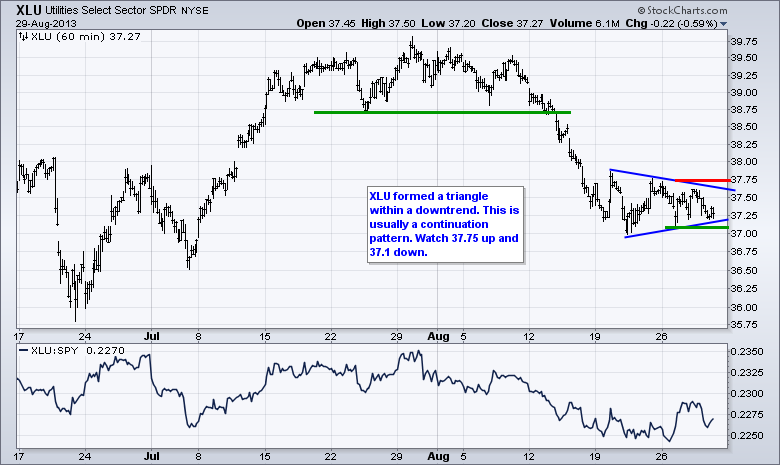
be construed as a recommendation to buy, sell or sell-short said securities**
Market action was mixed on Thursday with the Russell 2000 ETF (IWM) advancing around 1% and the S&P 500 ETF (SPY) advancing just .24%. Large-caps are lagging small-caps, perhaps because of geopolitical concerns and more international exposure. On the other hand, small-caps are showing relative strength, perhaps because GDP was stronger than expected. Small-caps are more focused on the US economy and have less international exposure. US GDP grew at a 2.5% clip, which was better than the forecast for 2.2% growth. Better-than-expected growth reinforces the argument for Fed tapering in the coming months. The prospects of less quantitative easing boosted the Dollar and weighed on commodities as copper and gold fell. Elsewhere, the sectors were mixed with the seven up and nine down. The gains were rather paltry with the leaders, technology and consumer discretionary, gaining around 1/2%. The Energy SPDR (XLE) fell back with a 1% loss and the Utilities SPDR (XLU) declined as the market took on a little more risk.


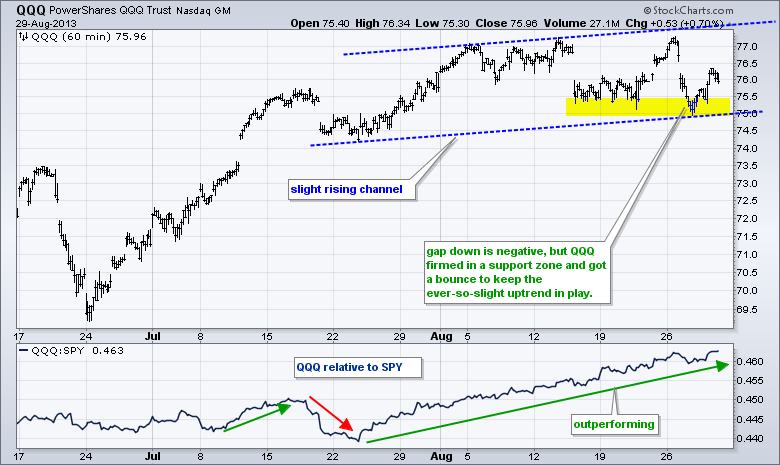
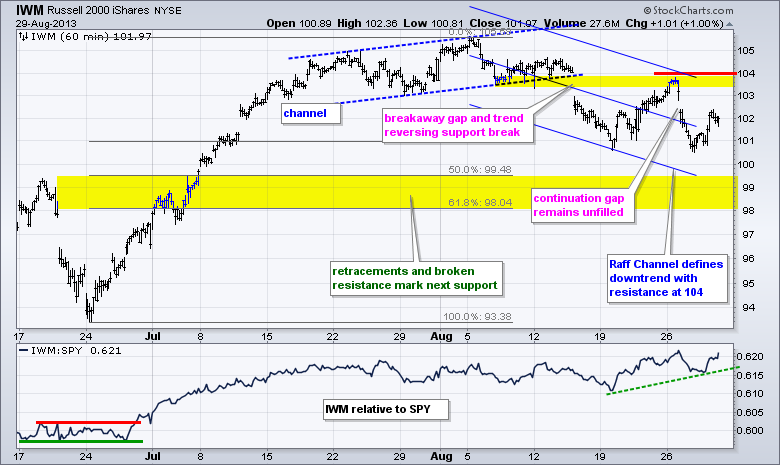
**************************************************************************
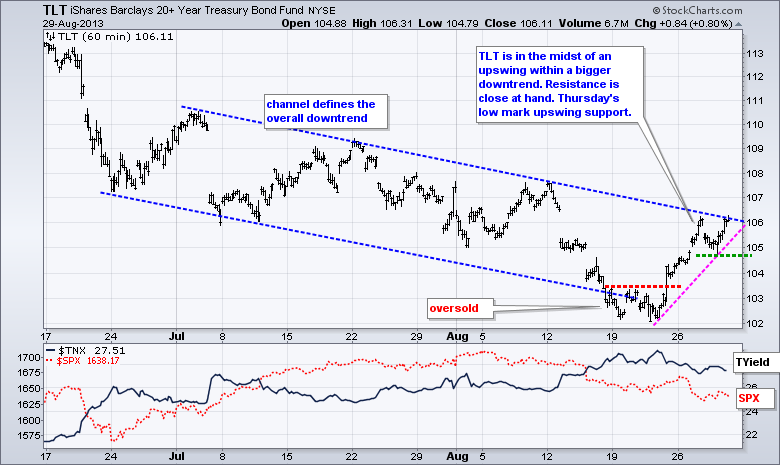
**************************************************************************
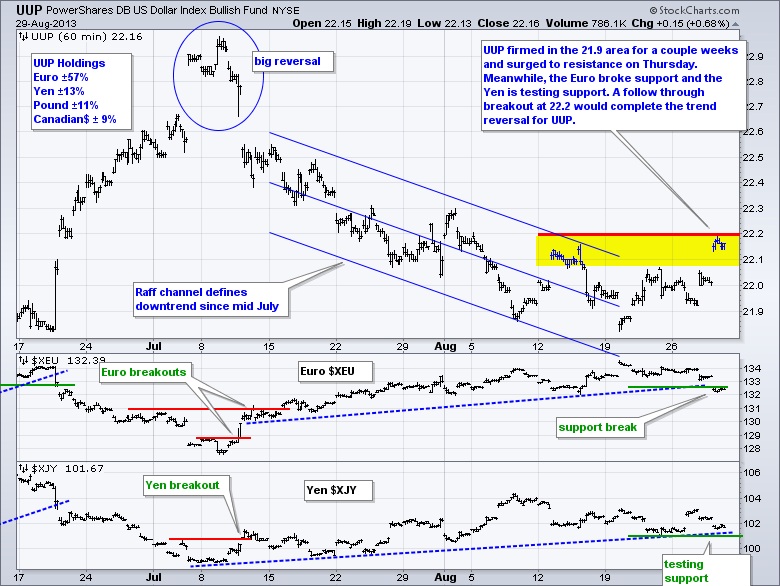
**************************************************************************
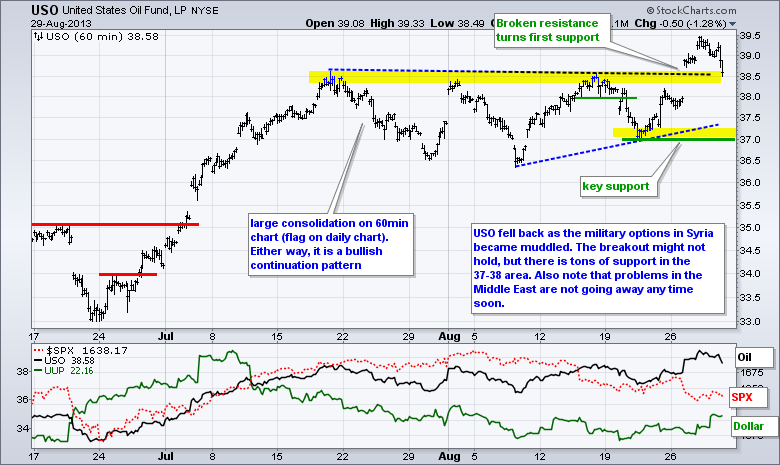
**************************************************************************
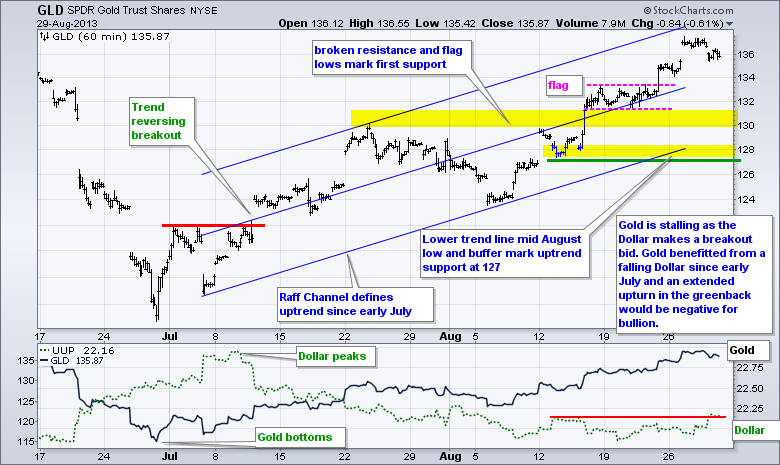
**************************************************************************
Key Reports and Events (all times Eastern):
Fri - Aug 30 - 08:30 - Personal Income & Spending
Fri - Aug 30 - 09:45 - Chicago PMI
Fri - Aug 30 - 09:55 - Michigan Sentiment
Fri – Sep 06 – 08:30 – Employment Report
Sun – Sep 22 – 10:00 – German Elections
Tue – Oct 15 - 09:00 – Debt Ceiling Deadline
Charts of Interest: Tuesday and Thursday
This commentary and charts-of-interest are designed to stimulate thinking. This analysis is
not a recommendation to buy, sell, hold or sell short any security (stock ETF or otherwise).
We all need to think for ourselves when it comes to trading our own accounts. First, it is
the only way to really learn. Second, we are the only ones responsible for our decisions.
Think of these charts as food for further analysis. Before making a trade, it is important
to have a plan. Plan the trade and trade the plan. Among other things, this includes setting
a trigger level, a target area and a stop-loss level. It is also important to plan for three
possible price movements: advance, decline or sideways. Have a plan for all three scenarios
BEFORE making the trade. Consider possible holding times. And finally, look at overall market
conditions and sector/industry performance.

About the author:
Arthur Hill, CMT, is the Chief Technical Strategist at TrendInvestorPro.com. Focusing predominantly on US equities and ETFs, his systematic approach of identifying trend, finding signals within the trend, and setting key price levels has made him an esteemed market technician. Arthur has written articles for numerous financial publications including Barrons and Stocks & Commodities Magazine. In addition to his Chartered Market Technician (CMT) designation, he holds an MBA from the Cass Business School at City University in London.
Learn More